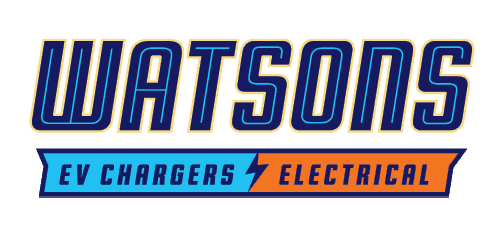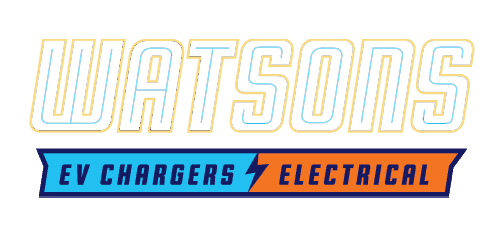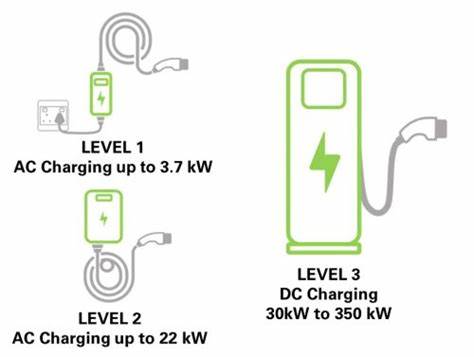Your Guide to EV Charger Options
As more people adopt electric vehicles, the availability of electric vehicle charging stations is becoming more critical. Drivers who own electric vehicles rely on EV chargers to keep their batteries full of energy and their cars on the road. EV owners have a few options for charging their vehicles, including a variety of public and private charging options.
As the premier EV charging station installation and maintenance company in Santa Clara County, Watson’s Charging Stations & Electric created a comprehensive guide to help you choose the correct EV charger for your vehicle. Read on to learn more about which charging option is right for you.
Public EV Charger Options
Public charging stations provide a convenient solution for EV owners without home charging access or needing to charge on the go. There are over 68,000 public charging outlets in the U.S., with more being added annually. Public stations may offer Level 2 or D.C. fast charging and can typically charge between two and six EVs at a time.
You can find public EV charging locations on apps like PlugShare, ChargeHub, and Greenlots. Charging networks like ChargePoint, EVgo, and Greenlots operate thousands of public charging spots nationwide. Some retailers, restaurants, hotels, and city parking lots also provide complimentary or paid public EV charging options for customers and visitors. Many multifamily homes and other property owners are also adding EV chargers available to the public to generate more income.
Using public chargers typically incurs additional fees, which vary by network and location. Most networks offer free and paid-to-charge plans with options to pay per session, monthly membership fees, or discounted subscriptions. Some utility companies and automakers also partner with public networks to offer free or subsidized charging for their customers.
Private EV Charger Options
For EV owners who want greater flexibility, more convenience, and lower fees, home vehicle charging stations are the way to go. These charging options can be set up in your garage, carport, or driveway to provide unfettered access to EV charging when needed. Companies like Watson’s Charging Stations & Electric help home, property, and business owners across Gilroy, CA, and the Santa Clara Valley create at-home charging solutions every day.
A home charger has a higher up-front cost when compared to visiting a public charger, but it will save you money in the long run. You can also use your own solar power grid or energy storage system to help reduce EV charging costs.
Unfortunately, not all homes have the electrical infrastructure to handle an at-home charger. A skilled electrician can help create dedicated outlets, upgrade your electrical panel, or install an electric vehicle charger on your property.
Types of EV Charging Stations
There are currently three main types of EV chargers: Level 1, Level 2, and Level 3 fast chargers. Selecting the appropriate charger for your EV depends on various factors, like your driving needs, budget, charging options, and vehicle compatibility.
Level 1 Chargers
A Level 1 charger uses a standard 120V wall outlet and typically provides two to five miles of range per hour of charging. They represent the most affordable and widely available but slowest charging option.
Level 2 Chargers
Level 2 chargers operate on a 240V outlet and supply 10 to 60 miles of range per hour. They require the installation of a 240V circuit and charging station, cost more upfront, but charge faster than a Level 1 EV charger.
Shoppers can choose from three different types of Level 2 charging stations to choose from:
1. Portable chargers: Can be moved from one location to another; best for renters or those with limited outdoor charging options. Tend to be lower power (3.6 kW).
2. Wall-mounted chargers: Installed on a wall or pole and fixed in one spot, ideal if you park your EV in the same place to charge. Range from relatively portable to weather-resistant permanent options. Offer higher charging power, around 7 kW.
3. Pedestal chargers: Standalone chargers mounted on a pedestal post designed for public or shared charging use. These also offer charging in the 7 kW range, are weather-resistant, and are more expensive than other options.
Level 3 Fast Chargers
Level 3 fast chargers deliver D.C. power and can add up to 200 miles of range in 30 minutes. However, they are the most expensive, require heavy-duty power supplies, and do not work with all EVs. Generally speaking, Level 3 chargers are not available for home use but are great options for commercial properties with the appropriate electrical infrastructure.
Choosing the Right Installation Option
For home installation, you need to consider factors like your home’s electrical capacity, wiring, and layout to choose a Level 2 option that works well in your situation. It’s best to have an electrician evaluate your home’s electrical service before purchasing chargers to make sure they can handle the added load. Your Gilory electrical contractors may need to install a separate 240V circuit or upgrade your home’s electrical panel. Many utilities or charging companies offer special EV charging plans and rebates to help pay for upgrades or make charging cheaper. Federal programs like the Inflation Reduction Act also offer massive rebates and tax incentives to help cover the cost of EV charger installation.
Things to Consider
Property owners have several essential factors to consider when determining the optimal EV charger for their needs:
Driving habits and range requirements: Choose a faster charger if you frequently drive long distances or need to recharge quickly. Level 1 or Level 2 chargers should suit your needs for everyday daily driving.
Your budget and electricity rates: Compare the upfront costs of the charger and installation fees along with your time-of-use utility rates. During off-peak hours, Level 1 and Level 2 chargers are often more affordable.
Your home or workplace charging access: Select a charger compatible with the outlets and power supply available where you park your vehicle the most.
Your vehicle’s battery capacity and charging port: Ensure any EV charger you choose works with your specific EV model’s charging port and can adequately recharge its battery capacity.
Your environmental impact: Faster charging demands more energy and produces more significant carbon emissions. Choose an optimal charger for your needs to maximize sustainability.
Let Watson’s Be Your Guide
The type of EV charger you select depends on balancing your essential needs, available options, and priorities. Luckily, you are not on your own to make the decision. Contact Watson’s Charging Stations & Electric to schedule a free consultation where we can help you weigh your options and make the best decision for you.


